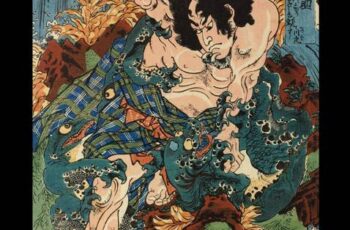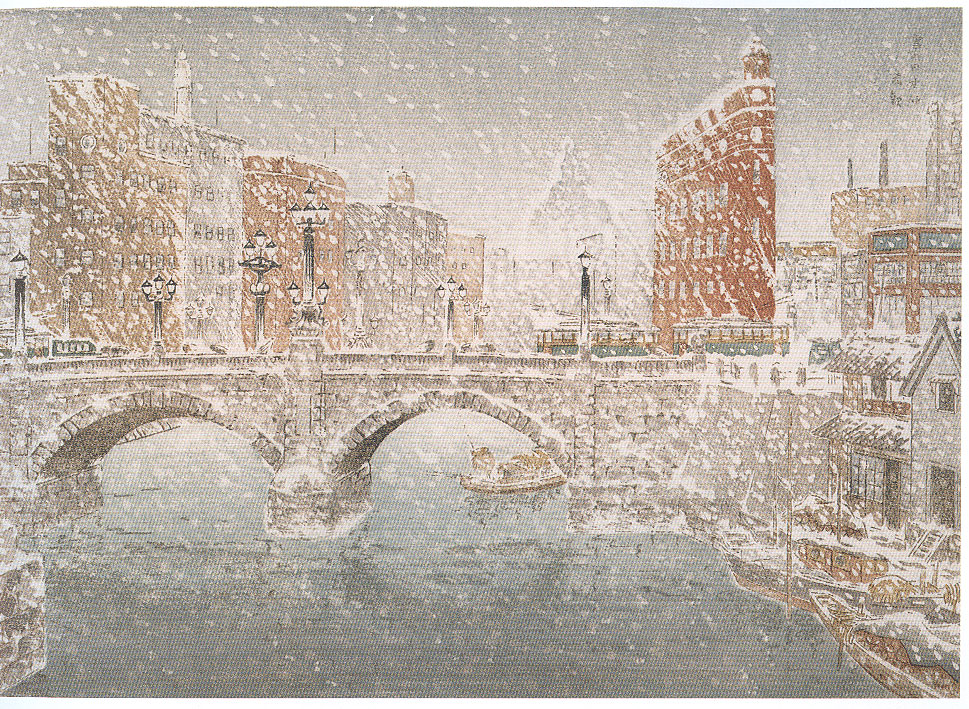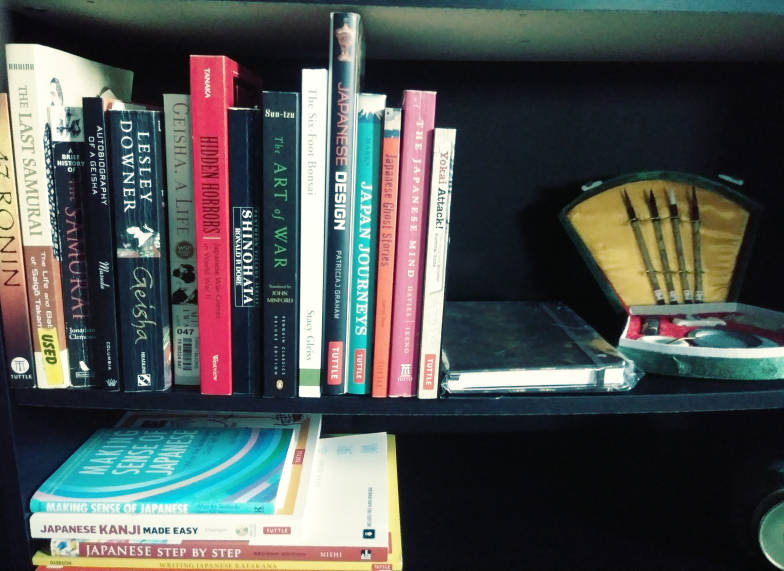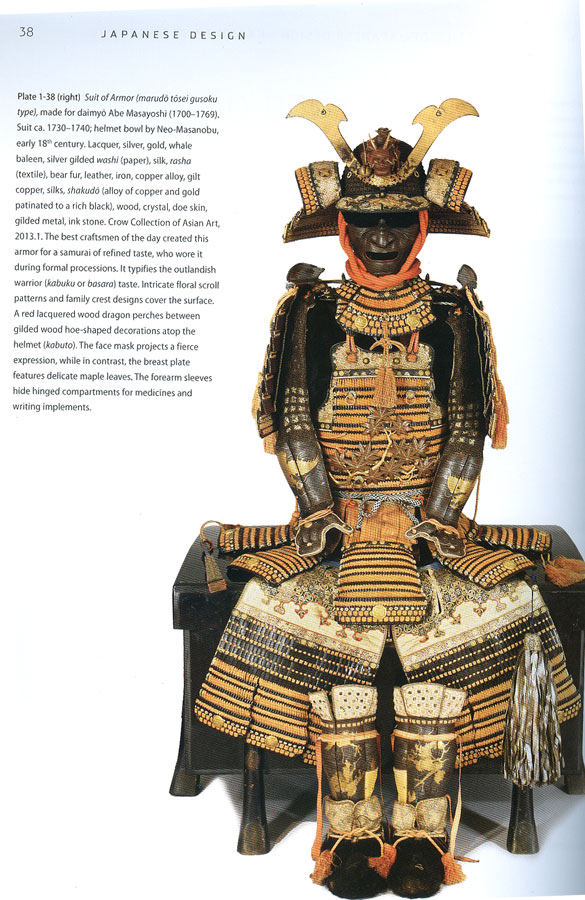About a year ago, I was looking at Edo-period book illustrations and reading name cartuoches – until I stumbled upon two which did not actually contain a name!
I was working behind the scenes of an exhibition at my former university (Goethe-University Frankfurt Main, Germany[1]), which owns a small but very well-preserved collection of mid- to late- Edo-period (mostly early 19th century) woodblock printed books.[2] Many of those are illustrated (beautifully even though black-and-white). We planned to exhibit a few of these, related to the topic of travel in Edo-period Japan. In the process of preparing the information booklet for the exhibition, my supervisor, my co-worker and I usually transcribed and then translated the text on the pages which were to be shown. 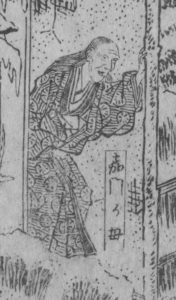
By contrast, in another novel we exhibited, 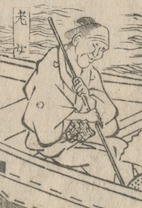
Why might this be? The principal difference between these two sets of female characters is their age. The women in Shûshoku are young and thus of interest to the male heroes (as potential wives or paramours); but the old women in Mukashigatari have either already served their function as wife/lover and mother, or are too old now to do so. In both cases, I thought to myself, they have nothing left to contribute to a patriarchal society… so why bother naming them?[3]
There is more to it of course. In the Edo era, religious and social prejudice against women was prevalent; Buddhism as well as Shinto decried women as polluted and polluting beings for their ‘sexual allure’ and their bleeding in menstruation and childbirth. (These were colourfully evoked in the Buddhist concept of Blood Lake Hell and are probably responsible for the prohibition for women to ascend certain holy mountains.[4]) Yet, Buddhist nunneries existed too, and traditionally, an imperial princess dwelled as a miko (shrine maiden) in the ancestral shrine of the Tennô family.[5] Because of the approach of death, old age especially was seen as a time of religious devotion for both genders[6] – that was how the elderly were supposed to spend their additional free time in ‘retirement’. Kamon’s mother follows this custom and in so doing, I would argue, demonstrates her agency when she travels the mountains, by herself, to worship at a temple.[7] I would also assume that, similar to the nunneries of the Christian Middle Age, religious practice offered security and even a pathway to some degree of validation and authority for women.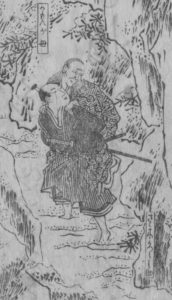
However, Confucianism was more influential in the period than either Japanized Buddhism or Shintô,[8] and it emphasized the moral virtue of caring for the aged, represented by ‘the image of the devoted son carrying his incapacitated [i.e. passive] parent around on his back’.[9] This is referenced in Mukashigatari when the hero, having saved Kamon’s mother from the bear, carries her home.
On the other hand, the image also recalls the ‘custom’ of ubasute (‘throwing away the old woman’) attacked in Confucian moral tales. In old times, these stories claim, whenever food was scarce or sometimes just because they became too much work, old people were abandoned in the mountains (which are linked to the afterworld in the Japanese religious mindset) by their kin – that is, until a faithful son breaks with the custom (there are different variants but this is the general story). In both ways, as a symbol of devotion or as a reminder of past bad practices, the image was vastly familiar in the Edo period and would have been recognized by the readers.[10] This stereotype could also be a reason why Kamon’s mother lacks a personal name – she is an intertextual reference.
Turning to the other old woman, the beggar, I found that, despite the Confucian demand for care and loving obedience toward one’s parents (and by extension all aged persons), old beggars are portrayed 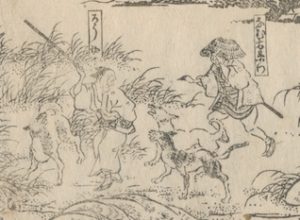
To conclude, it seems to me that, from whatever angle I approach them, these women end up being functions – either biologically, religiously/morally or narratively – rather than people. Limited in their options and confined by social expectations, which push them aside as dependents on filial piety, they don’t seem to matter enough to anyone – character, writer or reader – to deserve a personal name. Basically they cannot do anything interesting: if you are but an old woman with a stick, chances are you will not be able to beat back the dogs on your own.
In my next ‘musing’, I might be looking at very young women with sticks who perform magical feats, meaning Magical Girls, and try to disentangle a bit of the puzzling mixture of progressive and cringe-worthy stereotypical elements in the genre.
Notes and Sources:
[1] http://www.goethe-university-frankfurt.de/en?locale=en
[2] A German-language catalogue of the whole collection, entitled Edo Bunko, is available. See also the (German) website of the collection, http://sammlungen.uni-frankfurt.de/sammlung/43/edo-bibliothek-a-institut-f-r-ostasiatische-philologien-japanologie-a-edo-bunko-a-a-a-a/
[3] For an interesting discussion of the position, rights and abilities of Edo-period women, see Yabuta Yutaka, “Rediscovering Women in Tokugawa Japan”, a paper presented at the Japan Forum, Harvard University, 2000. http://rijs.fas.harvard.edu/pdfs/yabuta.pdf
[4] Okano Haruko, “Die Stellung der Frau in der japanischen Religionsgeschichte“, in Elisabeth Gössmann, ed, Japan – Ein Land der Frauen? (München: Juridicum, 1991), pp. 34-55, pp. 50-53.
[5] I read this in the notes to an English translation of the Kôjiki which is unavailable to me at the moment.
[6] Susanne Formanek, “Traditional Concepts and Images of Old Age in Japan”, in Florian Coulmas, ed, The Demographic Challenge: A Handbook about Japan, pp. 323-43, pp. 332-4. See also her (German) study Denn dem Alter kann keiner entfliehen: Altern und Alter im Japan der Nara- und Heian-Zeit (Wien: Österreichische Akademie der Wissenschaften, 1994), p. 505.
[7] Women were allowed in temples if they were past the age of forty: Susanne Formanek, Die “böse Alte” in der japanischen Populärkultur der Edo-Zeit: Die Feindvalenz und ihr soziales Umfeld (Wien: Österreichische Akademie der Wissenschaften, 2005), p. 384. There was a danger, of cause, for old women living alone in the mountains to become suspect, as the tales of the yôkai ‘yamauba’ reveal (Yamauba are also connected to the obasute-custom I mention later; see http://yokai.com/yamauba, for example). All the more reason, then, for Kamon’s mother to emphasize her piety.
[8] Yabuta, p. 10.
[9] Formanek, “Traditional Concepts”, p. 338.
[10] ibid.
[11] Formanek, Denn dem Altern, pp. 228-31.
